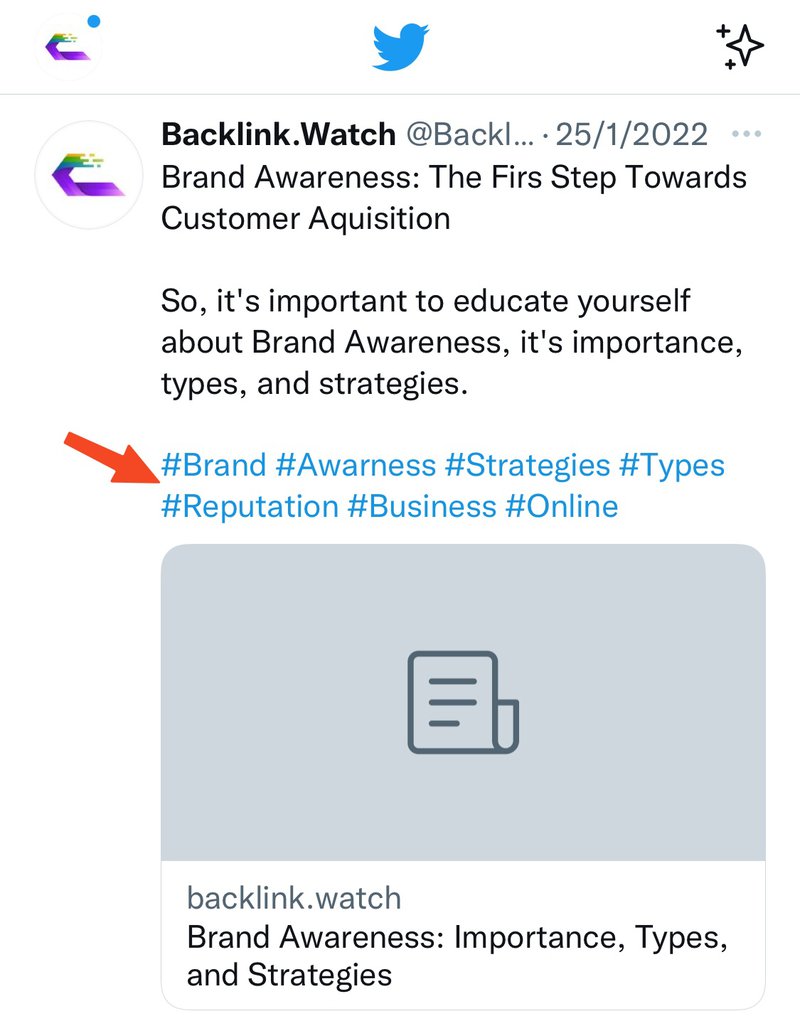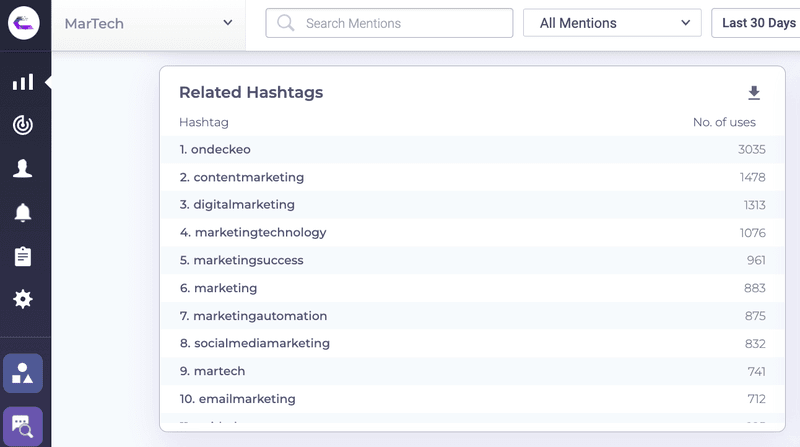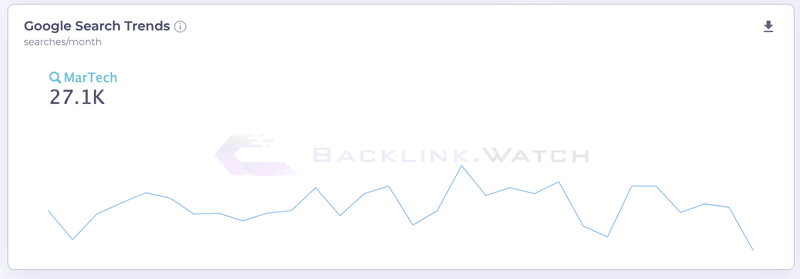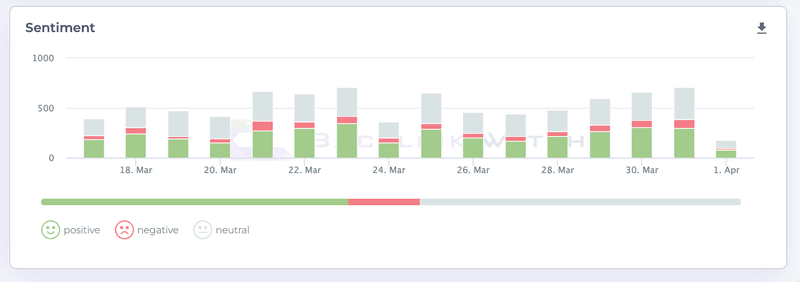When it comes to social media marketing for your business, hashtags are a must-have component of your content strategy. These useful little links create the ideal method for finding relevant content to share, making it easy for your audience to find your content, and grouping like conversations together.
If you've ever used Twitter or Instagram, you've most likely seen hashtags in action. You've most likely used hashtags on these platforms (and possibly others!).
Whether you're a seasoned hashtag expert or brand new to social marketing, one thing is certain: you must be able to track your hashtags. Knowing which hashtags are popular, which will drive people to your content, and which will get them talking is critical to your social strategy.
Twitter has a long history of incorporating user suggestions into its platform. Early Twitter users, for example, coined the term "Tweet" and invented @replies and retweets. And the platform has only recently added a thread feature to make it easier for people to create stories via tweet. A hashtag is a word or phrase that is followed by a hash or pound sign (#). and now it’s popular on social media platforms like Twitter, Facebook, and Instagram. The hashtag is used to identify and group conversations on a particular topic.
There can be multiple types of hashtags, such as:

So it wasn't long before hashtags became an official feature on the platform. It would be an understatement to say they spread like wildfire.
Hashtags are now widely used in social media, with platforms such as Facebook, Instagram, Pinterest, and LinkedIn eventually implementing the searchable feature. Every day, hundreds of thousands of posts with hashtags are shared on social media.
A hashtag is a tool for discovery that is widely used by both social media users and brands. They are a type of hashtag mention that can be useful in content marketing strategies, Twitter campaigns, and brand monitoring tracking. It is easily referred to as a type of social media content that functions like a stream of conversations used by those who share a common interest in a specific topic.
Because hashtags are so common, they can be used in a variety of ways and on a variety of platforms. Strategies can include creating your own branded hashtag to encourage your audience to share user-generated content or capitalizing on trending hashtags to create popular content.
The use of hashtags is not a difficult or advanced aspect of your strategy. Check out these hashtag-inclusion tips for your social media posts.
From finding the most relevant hashtags to your brand to tracking post-performance, Backlink.Watch can help you effectively analyze your strategy.
Use Backlink.Watch’s Related Hashtags to find out what topics and posts are resonating with your audience.
Discover your most used hashtags and those generating the most engagement by starting your free trial today.
The first priority is to find the best hashtags to use in your social media content. It's not just a game of chance, though some strategic A/B testing is always a good idea. Each platform has a search bar where you can look for potential hashtags for your content, but those search features don't always tell you how popular the hashtag is.
Using a tool like Backlink.Watch to gauge interest in hashtags on numbers of source, such as Web, Twitter, Facebook, Youtube, Instagram, Pinterest, Linkedin, Reddit and Quora . You can look up the popularity of an industry hashtag (for example, #socialmedia) and compare it to the top related hashtags.

What should you look for when you know a hashtag is effective for your social strategy? Here are a few key metrics to consider when determining the success of a hashtag.
Backlink.Watch Hashtag Monitoring is the best way to get Twitter, LinkedIn, Facebook, or Instagram hashtag tracker insights. You'll get key metrics on the hashtags that are important to you. Each reported mention will include the following metrics:





Backlink.Watch can also be used to find and analyze the performance of your hashtags. You can use Backlink.Watch as social listening tool to learn how frequently people discuss your topic, what related terms they use, and what the general sentiment is on the subject.

It's critical to have a clear picture of your hashtag data. You can get some free Instagram hashtag analytics directly from the social media platform. The amount of free data available from the social media platform is somewhat limited. Much more information is required to create successful social marketing campaigns.
Here are a few hashtag tracking use cases you could consider:
If you just want to check in on a specific hashtag on Instagram every now and then, go to the Explore tab and type the hashtag term in the search bar at the top of the screen. A hashtag tracker tool is recommended if you want an automated and in-depth hashtag search.
From the social platform itself, you can learn a few things about a hashtag that has been shared. When you search for a hashtag on Facebook, you'll see a feed of posts with that hashtag in them. At the top of the page, you may also notice various usage patterns and related hashtags. Keep in mind that you will only see posts that you or your friends have shared. If you want to track hashtags on Facebook effectively, use a Facebook hashtag tracking tool like the one offered by Brandwatch. You'll get a lot of information and key metrics about the hashtags, as well as their performance.
While it is true that you can simply search for a hashtag on Twitter and get results containing that hashtag, if you work in digital marketing, you need relevant Twitter performance data about your Twitter chats. A powerful Twitter analytics tool will tell you how your tweets are performing and what changes you should make to increase your Twitter impressions. It's not a difficult task if you have the right Twitter hashtag monitoring tool and know which hashtag metrics to look at.
The most popular hashtags are, by definition, the most used. When you start analyzing a hashtag, you realize you need to learn everything you can about it. The following questions will be answered by a hashtag analysis:
To determine the popularity of hashtag keywords, simply count the number of times a hashtag is used. Instagram and Twitter display hashtag statistics such as the total number of times this hashtag was used or the number of reach impressions.
The number of hashtags you use is determined by the platform to which you are posting. When it comes to social media networks, there is no such thing as a one-size-fits-all hashtag strategy. In fact, using hashtags in your posts is discouraged on some platforms. SocialCampaign is a social media management tool it helps you manage all your hashtags in a glad.
Suggested hashtag per post as below:
This guide will teach you everything you need to know about Twitter analytics, or you can look here for a list of Twitter analytics tools.
By using hashtags, you can increase the reach and engagement of your social media content. Hashtags are one of the most powerful organic social media strategies, but you must track your hashtags in order to maximize their performance.
Many brands struggle to determine which social media metrics are most important for their campaigns, and hashtags are no exception. The trends report from Backlink.Watch makes it incredibly simple to see which hashtags your audience is using, how they're performing, and what other topics they're mentioned with. This allows you to build your content strategy around what your audience is most interested in, rather than simply latching on to popular hashtags that have little relevance to your brand or audience.

Including those keywords and hashtags in your own tweets can help generate more online engagement and buzz for your brand. A sample report can be found by clicking here.
You'll be using several different types of hashtags in your social media content. Here's how and why to keep track of each one.
Content hashtags are simply keyword hashtags that you include at the end or within your post. Returning to the example from earlier in this article, #socialmedia would be considered a content hashtag when searching for relevant hashtags. Industry hashtags for your company would also be considered content hashtags.
You should keep track of these so you know which are the most popular content hashtags to use when sharing content such as a blog post or other industry-related news. Check out tools like Backlink.Watch to see which content hashtags are the most popular and seen the most.
Check out your sidebar on Twitter's desktop website or tap the magnifying glass icon on the smartphone app to see which hashtags are trending. The platform will tell you how many people are talking about each trending hashtag, so you'll know if it's worth incorporating into your content ahead of time.
Using trending hashtags in a way that is relevant to your content and consistent with your brand voice can help your post gain viral attention. Check your Twitter report to see how the impact differs from when you use your regular hashtags.

A branded hashtag is one that your company has created and promotes as a way for people to directly tag your company. For example, @instantpage_dev uses the hashtag #instantpagedev to promote their product on Twitter.
If your company is hosting an event, if your team members are attending an industry event or conference, or if you're tweeting about a large event taking place nationally or internationally (for example, major sporting events), include the event's hashtag in all of your posts about that event.
Live-tweeting is an excellent way to generate buzz around your event and event hashtag while also increasing reach and engagement with your content.
Monitoring your Backlink.Watch report is an excellent way to determine how much engagement your event chatter generated for your company and whether you were able to increase your reach, follower count, and other metrics. Social listening is a great way to see how many other people were using the same event hashtag or discussing related topics.
A campaign/ad hashtag is one that your company creates for a particular campaign, launch, or digital advertisement. This aids in the creation of buzz around a specific action taken by your company.
For example, Dataiku will use a different hashtag each time they promote ebook download.

If your company is attempting to promote the launch of a new product or service, or is running a specific campaign, creating a new hashtag for your company and customers to use is a great way to spread the word. These hashtags are also excellent for tracking because they are so specific to the focus of each campaign as opposed to your recurring brand or content hashtags.
Social listening is an excellent strategy for tracking how your campaign/ad hashtags are being used and how well they are resonating with your target audience.
Don't put off testing and tracking your hashtag use in your social strategy any longer now that you've got the know-how and the tools. Create a trial account now and learn more about how Backlink.Watch can assist you with hashtag analytics, and share your favourite hashtag implementation methods in the comments!